charles lindbergh

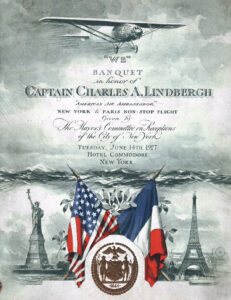 I think most people have heard of Charles Lindbergh, who was born on February 4, 1902, in Detroit, Michigan, was an American aviator celebrated for conducting the first solo, non-stop flight across the Atlantic Ocean. We all like to think about the amazing accomplishments that have marked our history books. When airplanes were invented, there was little chance that records wouldn’t be set and advances made. Man has always tried to improve on things.
I think most people have heard of Charles Lindbergh, who was born on February 4, 1902, in Detroit, Michigan, was an American aviator celebrated for conducting the first solo, non-stop flight across the Atlantic Ocean. We all like to think about the amazing accomplishments that have marked our history books. When airplanes were invented, there was little chance that records wouldn’t be set and advances made. Man has always tried to improve on things.
Lindbergh’s famous flight took place in 1927, when he flew the Spirit of Saint Louis from New York to Paris. The flight took 33.5 hours and made Lindbergh an international hero, but I can only imagine how he felt as he was flying along. He was doing something no one had ever done before!! I suppose there is always that first time for everything new, but Lindbergh had 33.5 hours to think about that.
Fame has a way of giving a person a lot of pull in whatever area they might try to use that influence, and Lindbergh 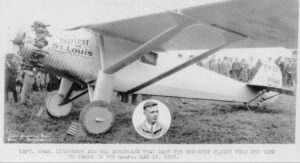
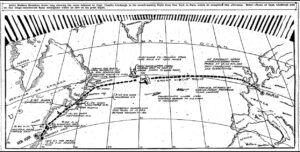 was interested in promoting commercial aviation and air mail services. He was especially instrumental in the development of transatlantic flights, pushing for the establishment of routes and infrastructure that would enable commercial aviation to thrive.
was interested in promoting commercial aviation and air mail services. He was especially instrumental in the development of transatlantic flights, pushing for the establishment of routes and infrastructure that would enable commercial aviation to thrive.
Unfortunately, fame also makes people into targets. For Lindbergh, being a target came in the form of his son, Charles Lindbergh Jr being kidnapped and, while Lindbergh paid the $50,000 ransom, his son was found murdered in 1932, which resulted in what was known as the “Crime of the Century.” Lindbergh’s influence now took a different 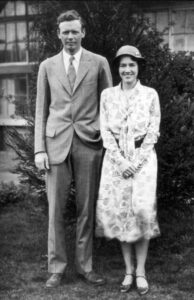
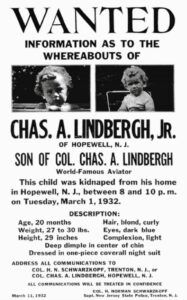 turn, in the form pushing for the Lindbergh Law or Federal Kidnapping Act, making kidnapping a federal crime in the United States.
turn, in the form pushing for the Lindbergh Law or Federal Kidnapping Act, making kidnapping a federal crime in the United States.
While debated by the loss of his son, Lindbergh knew that he must go on…life must go on. He went on to make contributions to various fields, including conservation and literature. He also developed a keen interest in environmental issues and worked with various institutions to advocate for the protection of wildlife and habitats. In addition to those things, he authored several books, including “The Spirit of Saint Louis,” which recounts his historic flight. That book won the Pulitzer Prize in 1954. Charles Lindbergh passed away on August 26, 1974, of Lymphoma at the age of 72.
 As airplanes became an accepted form of transportation, people began to consider traveling further and further. Of course, those first airplanes could never have made the flight across the ocean, but these days planes fly that far with ease. Still, someone had to be brave enough to take that first flight across the ocean. Someone had to trust their plane enough to make the attempt. British aviators John Alcock and Arthur Brown decided to be the first to make that leap when they made the first non-stop transatlantic flight in June 1919. Their plane was a modified First World War Vickers Vimy bomber. They flew from Saint John’s, Newfoundland to Clifden, Connemara, County Galway, Ireland. Like most accomplishments, the competition was fierce, and there had to be a reward for the winner. The Secretary of State for Air, Winston Churchill, presented them with the Daily Mail prize for the first crossing of the Atlantic Ocean by airplane in “less than 72 consecutive hours”. A small amount of mail was carried on the flight, making it the first transatlantic airmail flight. The two aviators were awarded the honour of Knight Commander of the Most Excellent Order of the British Empire a week later by King George V at Windsor Castle.
As airplanes became an accepted form of transportation, people began to consider traveling further and further. Of course, those first airplanes could never have made the flight across the ocean, but these days planes fly that far with ease. Still, someone had to be brave enough to take that first flight across the ocean. Someone had to trust their plane enough to make the attempt. British aviators John Alcock and Arthur Brown decided to be the first to make that leap when they made the first non-stop transatlantic flight in June 1919. Their plane was a modified First World War Vickers Vimy bomber. They flew from Saint John’s, Newfoundland to Clifden, Connemara, County Galway, Ireland. Like most accomplishments, the competition was fierce, and there had to be a reward for the winner. The Secretary of State for Air, Winston Churchill, presented them with the Daily Mail prize for the first crossing of the Atlantic Ocean by airplane in “less than 72 consecutive hours”. A small amount of mail was carried on the flight, making it the first transatlantic airmail flight. The two aviators were awarded the honour of Knight Commander of the Most Excellent Order of the British Empire a week later by King George V at Windsor Castle.
As with any record, there is always room for improvement. The first flight took place with two people on board, so on Ma 21, 1927, at age 25, Charles Lindbergh went from being an unknown United States Air Mail pilot, to world fame instantly, by making his Orteig Prize winning nonstop flight from Long Island, New York to Paris. He covered the 33½ hour, 3,600 miles alone in a single-engine Ryan monoplane called the Spirit of Saint Louis. 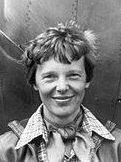 The plane was build for this flight. This was the first solo transatlantic flight, and the first non-stop flight between North America and mainland Europe. I wonder what he was thinking as he flew for 33½ hours alone over the ocean. He had to keep himself awake, and on course. There was no one else to do it. Most of us have a hard time staying awake for more than 17 or 18 hours, much less 33½ hours. It was an amazing feat, and one for which the fame he gained was well deserved.
The plane was build for this flight. This was the first solo transatlantic flight, and the first non-stop flight between North America and mainland Europe. I wonder what he was thinking as he flew for 33½ hours alone over the ocean. He had to keep himself awake, and on course. There was no one else to do it. Most of us have a hard time staying awake for more than 17 or 18 hours, much less 33½ hours. It was an amazing feat, and one for which the fame he gained was well deserved.
As with any record, someone had to beat it or improve on it or change it in some way. The record held until May 21, 1932, when Amelia Earhart became the first woman to make a solo air crossing of the Atlantic Ocean, from Newfoundland to Ireland. As with Charles Lindbergh, I wondered how Amelia stayed awake for all those hours, and what she was thinking as she flew along…alone for all those hours. I’m sure there was excitement in the extreme, but I’m sure she was weary after the flight was over too.

